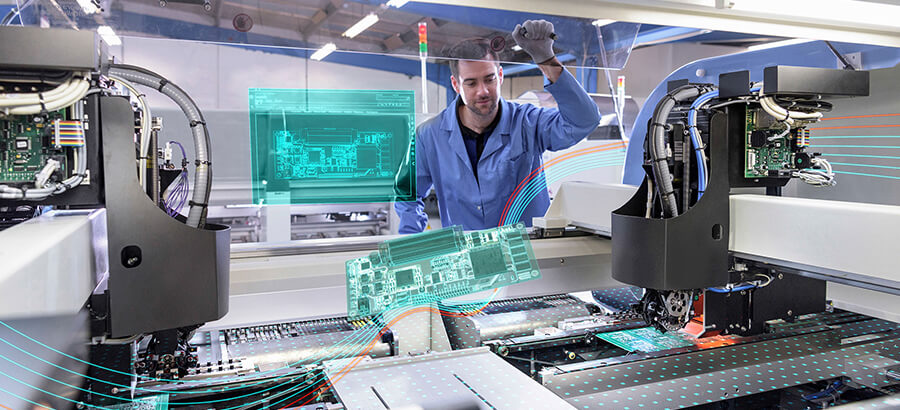The original industrial revolution transformed not just the way humans manufactured things, but how and where we lived. Today, what was once cutting-edge now seems hopelessly dated, and we are well into the fourth industrial age or Industry 4.0 – the age of automation and data transfer. Connected systems are empowering companies engaged in intelligent manufacturing.
Whereas historically, machines relied on humans to control their operations, direct human intervention has been gradually replaced by indirectly inputted commands. That was the essence of the Third Industrial Revolution and is the technology that most of us are familiar with.
However, this, in turn, is being superseded by technology that relies on connected systems (as part of the Internet of Things) that can communicate with each other. Increasingly, they can also make decisions for themselves.
Thinking, Feeling Machines
The integration of sensors into manufacturing systems has allowed them to gather data about their inputs and outputs and perform quality analyses. They can also assess their own ‘health’, in that they can detect faults or components that need to be serviced or replaced.
Machines have always had the advantage of being able to tirelessly perform repetitive tasks without variation or complaint. Giving them decision-making capabilities reduces the need for humans to be present in manufacturing locations. This, in turn, reduces the risk of accidents and delivers efficiencies.
There are further advantages for manufacturing workers. As machines become capable of taking on ancillary tasks not immediately related to physically making things, human capital can be freed up to focus on more stimulating and rewarding projects.
Benefits of Intelligent Manufacturing
- Cost-savings
- Increased safety
- Reduce execution times
Industry 4.0 is about much more than merely generating more data. After all, the value of data lies not in simply acquiring it, but sharing it. Greater connectivity in every direction means that suppliers and customers will become ever more involved as stakeholders in the manufacturing process.
Other technologies will feed into this trend, including 3D printing for faster prototyping and materials testing, and mass customization to meet consumer demands for personalized products.
Genuine Artificial Intelligence
Perhaps the two most important trends will be the increasing adoption of artificial intelligence (AI) and machine learning (ML). These related developments will enable computers to not only process data, but learn from it. They will be able to make decisions in ways that demonstrate human-like cognitive abilities.
With computers able to make calculations and process large volumes of data far faster than people can, they are particularly well-suited to perform analytical tasks. This includes looking for trends in data (and equally, flagging anomalies), predicting future outcomes and sorting or categorizing data.
Artificial intelligence enables computers to make decisions based on the information that they have processed, while machine learning is an advanced version of the adage about learning from mistakes. Intelligent, connected systems can assess and improve their own performance, and share key learnings with other connected systems in their smart manufacturing ecosystem.
Extracting Maximum Data Value
As mentioned earlier, these improved outcomes range from enhanced workplace safety to reduce time to market for new products. As more companies begin to see the benefit of machines that can learn and ‘talk’ to each other, Industry 4.0 (which is currently most advanced in Germany and the USA) will, like all revolutionary technologies before it becomes commonplace.
This is good news for everyone involved in the chain of production, from suppliers to technicians to end-users. Connected systems will bring stakeholders closer together, and the leveraging of data on production metrics will enable better decision making. The result will be intelligent manufacturing characterized by higher-quality, more cost-effective outputs.







